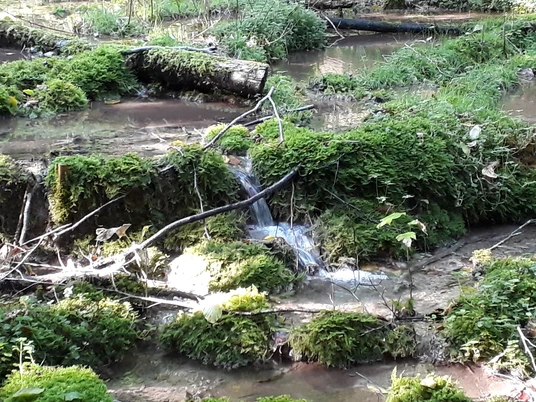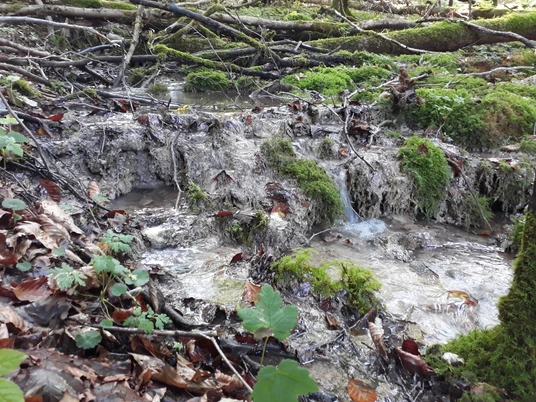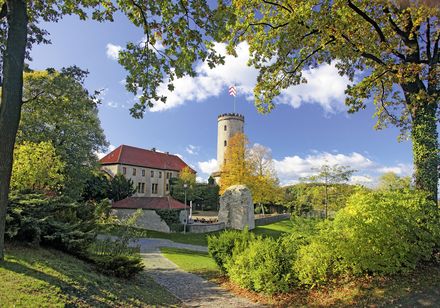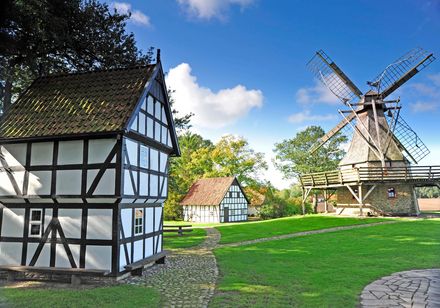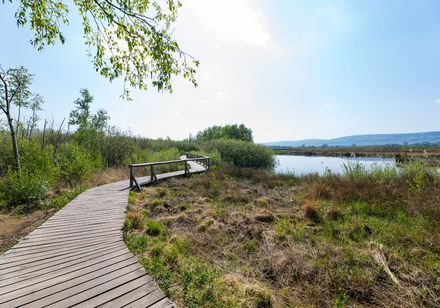At first glance, calcareous tufa springs are not particularly different from other springs. Hidden by the dense canopy of leaves, the water from calcareous tufa springs gushes through the forest in small streams. This makes the winter months particularly suitable for a "treasure hunt". But please only marvel at this natural treasure from the edge of the path, as calcareous tufa is very porous and would crumble under every footstep.
If you look through the bare trees now, you can spot calcareous tufa springs with a little practice. This is because distinct calcareous tufa springs are ultimately very different from other springs. The water of lime tufa springs flows over many small cascades and terraces, usually overgrown with moss, which are formed by the precipitation of lime.
But how does lime precipitation occur? In the case of calcareous tufa springs, the water bubbles out of calcareous rock and is thus enriched with lime. Once it reaches the surface, the water becomes warmer, carbon dioxide dissolves and lime precipitation occurs.
The plants around the calcareous tufa springs can also contribute to the precipitation of lime, such as strong nerve mosses. This is because the photosynthesis of the plants also removes carbon dioxide from the calcareous water.
By the way, the fire salamander also feels at home in calcareous tufa springs. However, this is less due to the calcareous tufa than to the diverse structure of the springs. This is because fire salamander larvae can grow well in the shallow, low-flow areas.
If you look through the bare trees now, you can spot calcareous tufa springs with a little practice. This is because distinct calcareous tufa springs are ultimately very different from other springs. The water of lime tufa springs flows over many small cascades and terraces, usually overgrown with moss, which are formed by the precipitation of lime.
But how does lime precipitation occur? In the case of calcareous tufa springs, the water bubbles out of calcareous rock and is thus enriched with lime. Once it reaches the surface, the water becomes warmer, carbon dioxide dissolves and lime precipitation occurs.
The plants around the calcareous tufa springs can also contribute to the precipitation of lime, such as strong nerve mosses. This is because the photosynthesis of the plants also removes carbon dioxide from the calcareous water.
By the way, the fire salamander also feels at home in calcareous tufa springs. However, this is less due to the calcareous tufa than to the diverse structure of the springs. This is because fire salamander larvae can grow well in the shallow, low-flow areas.
Nearby
